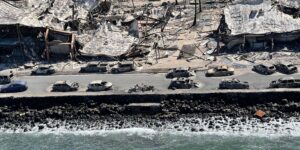October 2013 has been remarkably active for typhoons in the West Pacific. Halfway through the month the region has already seen the formation of six tropical storms—four of which have reached typhoon status—while a typical October produces an average of just four named storms, according to RMS.
With two weeks to go, the month is fast approaching the record eight named storms produced in October 1984, from a total 27 named storms that year.
The 2013 West Pacific typhoon season as a whole was not particularly active before October, says RMS. Twenty-one storms were observed between January and September—just slightly higher than the average of 18.9.
Typhoon Wipha, currently tracking past Japan, is a very large storm that has been undergoing extra-tropical transition, bringing stronger winds and heavier rains on the left-hand side, close to land. The typhoon skirted past the southeastern tip of Tokyo’s Chiba Prefecture, only 22 miles from the coastline and 70 miles southeast of Tokyo, impacting a very large area of Japan’s southern coast with strong winds and heavy rainfall.
Typhoon Fitow made landfall in China on Oct. 6, followed by Typhoon Nari, which made landfall in the Philippines on Oct. 11 and in Vietnam on Oct. 15. The storms caused severe flooding in major cities, including Shanghai in China and Da Nang in Vietnam, where heavy damage to property and infrastructure has been reported.
These catastrophes continue to emphasize that flooding often is the primary driver of insured losses from storms in the region, says RMS. The top five heaviest rainfall events on record in China are all associated with tropical cyclones, with flooding the predominant driver of insured losses.
Current environmental conditions over the Philippines Sea, including warm sea surface temperatures coupled with very low vertical wind shear, are particularly favorable for tropical cyclone formation and intensification, says RMS. These conditions are ideal to allow tropical storm 26—which formed Oct. 16 and is currently located over the Philippines Sea—to intensify as it moves northwestward and become the fifth typhoon of the month.
Source: RMS




















 That Insurance Talent Crisis? It’s a Global Knowledge Opportunity
That Insurance Talent Crisis? It’s a Global Knowledge Opportunity  Former MLB Player Charged With Insurance Fraud in Florida
Former MLB Player Charged With Insurance Fraud in Florida  Ford Recall of 43,000 SUVs Due to Fire Risk Won’t Remedy Gas Leaks
Ford Recall of 43,000 SUVs Due to Fire Risk Won’t Remedy Gas Leaks  Uncertainty Keeps Prices Up; No Prior-Year Loss Development: Travelers
Uncertainty Keeps Prices Up; No Prior-Year Loss Development: Travelers 



